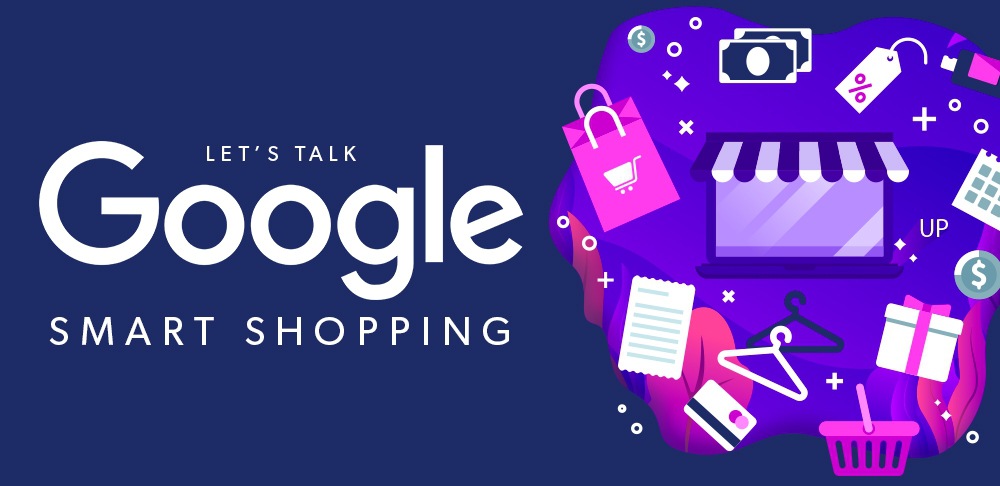Shopping campaigns have not only become a requirement for e-commerce companies to stay relevant and promote their online and local inventory, but to also protect their Brand impression share from competitors and retain their current client base. It’s been a little over 6 months since Google released its new Smart Shopping campaign, but what exactly makes Smart Shopping, “smart”? Is it actually as “smart” as Google says it is?
Today we’ll break down the pros & cons of Smart Shopping vs. Standard Shopping and share a comparative case study help you determine whether or not it can be useful for your business. Standard Shopping strategies have given us the ability to:
- Create separate Brand & Non-Brand campaigns for greater traffic flow control
- Utilize the Target ROAS bidding strategy at the product or product category level for specific return on spend goals & granular insight into performance
- Make manual optimizations at the audience, location, ad schedule, & device level for qualified targeting with higher conversion probability
However, it has been a little over 6 months since Google’s new Smart Shopping Campaign has been universally launched, which utilizes:
- Advanced Machine Learning to figure out your optimal audience and maximize your conversion value
- Combination of Standard Shopping & Display Remarketing
- Display Remarketing: When a user views a specific product, Smart Shopping will crawl your shopping feed and serve the specific product as a display ad
- Ads across Google Search Network, Google Display Network, YouTube, & Gmail
- Maximize Conversion Value bidding strategy with an option for a Target ROAS goal
Simply put, Smart Shopping’s advanced Machine Learning algorithm is able to take into consideration your audience and their conversion probability, your price points compared to your competitors, time-of-day performance, and device type performance to determine when and to whom an ad for a specific product should be served. Sounds too good to be true, right? We were skeptical of how successful it would be and whether or not Google’s Machine learning algorithm was as good as advertised, so we put Smart Shopping to the test.
Shown below is a comparison of Standard Shopping & Smart Shopping performance for one of our e-commerce clients looking at the same YoY date range.
Key findings to take away from this comparison
- Overall Efficiency
- Despite a 30% decrease in Spend, Smart Shopping was able to retain most of the Revenue volume (-1%), while clicks actually increased by 6%.
- The decrease in Avg. CPC by 34% was a direct factor, as marketing dollars were spent more efficiently towards conversions, increasing ROAS by 41%.
- Despite a 30% decrease in Spend, Smart Shopping was able to retain most of the Revenue volume (-1%), while clicks actually increased by 6%.
- Additional “Advertising”
- Since Smart Shopping serves ads across Google Search Network, Google Display Network, YouTube, & Gmail, more product impressions were served with Smart Shopping.
Although this is just an example of one business, we’ve seen similar performance trends in the clients that we’ve migrated over to Smart Shopping. Avg. CPCs are much cheaper, while Google’s Machine Learning algorithm is able to find audiences that convert that are difficult to find with Standard Shopping’s capabilities. The decrease in Spend allows us to allocate the leftover Spend towards maximizing standard Brand Search or investing it into Non-Brand prospecting, which will allow the business to grow.
Negatives and limitations
I’ve talked about all the ways that Smart Shopping could benefit your business over Standard Shopping, but you may be wondering about whether there are any negatives and limitations of using Smart Shopping. As we’ve experimented with Smart Shopping, here are some of our findings:
- If you’re a control freak, Smart Shopping is not the way to go
- Unlike Standard Shopping, Smart Shopping does not allow you to keep track of Brand vs. Non-Brand spend & overall performance.
- While it does provide you insight into placement, location, ad schedule, & device performance, it does not allow you to append any positive or negative bid adjustments or exclude segments to work in conjunction with its Machine Learning.
- Inability to see segmented performance between Display, Shopping, YouTube & Gmail
- Impression Share Unavailable
-
- You are unable to see whether you’re maximizing your own Brand search terms and are pretty much giving Google full control of your Shopping strategy.
-
While there are a couple of frustrating components of using Smart Shopping within the limitations of reporting and metrics available and the inability to make any type of optimization, it seems that Google’s Smart Bidding & Machine Learning algorithms have improved much over the past couple of years to prove to be useful. Although there are factors such as price point and traffic volume that affect overall Smart Shopping performance, due to the level of efficiency that Smart Shopping may be able to provide, we highly recommend that your business at least test Smart Shopping once to see how it compares to your Standard Shopping approach. (Give it at least two weeks before you come to a conclusion. Machines need time to learn too.)
Have any questions or want to learn more about Smart shopping? Reach out to us at [email protected].



